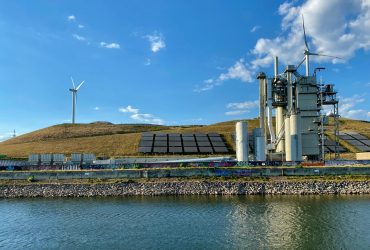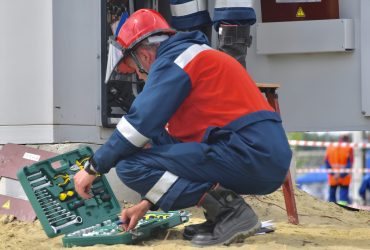
Hybrid Wind-Solar Systems Displace Diesel Generators in Remote Infrastructure: A Growing Market Transformation
The deployment of diesel generators for remote infrastructure power is experiencing a significant shift as hybrid wind-solar systems capture an increasing share of new installations and retrofits. Industry data suggests that renewable energy systems are displacing traditional diesel-powered solutions across telecommunications, agriculture, and critical infrastructure sectors, driven by operational cost reductions and environmental compliance requirements.
This transformation reflects broader changes in remote power infrastructure, where the total cost of ownership advantages of renewable systems are becoming increasingly apparent. Hybrid wind-solar installations offer continuous power generation capabilities that address the fundamental limitations of solar-only systems while eliminating the ongoing fuel and maintenance costs associated with diesel generators.
The Renewable Energy Substitution Trend
Hybrid Wind-Solar Systems Replacing Diesel Generators
The substitution of hybrid renewable systems for diesel generators is most pronounced in remote infrastructure applications where fuel logistics create significant operational challenges. Telecommunications tower operators, agricultural facilities, and critical infrastructure managers are increasingly adopting hybrid wind-solar solutions that combine complementary generation profiles to provide reliable 24/7 power.
This transition is accelerated by the modular nature of modern renewable systems, which enable phased implementation and scalability based on specific energy requirements. Small wind turbines integrated with solar photovoltaic installations can match or exceed the reliability of diesel generators while eliminating fuel dependency and reducing maintenance requirements.
Cost Drivers Behind the Transition
Volatile diesel fuel prices and complex logistics for remote fuel deliveries have created compelling economic incentives for renewable energy adoption. Remote infrastructure operators face unpredictable fuel costs that can fluctuate significantly based on global petroleum markets and local supply chain constraints.
Hybrid renewable systems provide predictable energy costs over extended operational periods, enabling more accurate budget planning and improved financial performance. The elimination of fuel purchases and reduced maintenance requirements typically result in lower total cost of ownership compared to diesel generator systems over the equipment lifetime.
Environmental and Regulatory Factors
Regulatory frameworks increasingly mandate reduced carbon emissions from infrastructure operations, while corporate sustainability initiatives drive operators toward renewable energy solutions. Government incentives for renewable energy adoption provide additional financial benefits that improve the economic case for hybrid wind-solar systems.
Environmental compliance requirements are particularly significant for publicly regulated industries including telecommunications and critical infrastructure, where sustainability reporting and emission reduction targets influence technology selection decisions.
Market Segments Leading the Transition
Telecommunications Infrastructure
The telecommunications industry represents one of the largest and fastest-growing markets for hybrid wind-solar systems replacing diesel generators. Remote cellular towers and base stations require continuous power for critical network operations while operating in locations where grid connections may be unreliable or unavailable.
Telecommunications operators benefit from the continuous power generation capabilities of hybrid systems, which provide the reliability needed for service level agreement compliance while reducing operational expenses. The 24/7 generation profile of wind-solar combinations reduces battery storage requirements compared to solar-only installations.
Agricultural Operations
Agricultural facilities including livestock operations, irrigation systems, and processing facilities are adopting hybrid renewable systems to reduce energy costs and improve operational resilience. Remote agricultural sites often face high electricity costs and limited grid reliability, making renewable energy systems attractive alternatives.
Seasonal energy demand patterns in agriculture align well with hybrid wind-solar generation profiles, where wind resources often complement solar output during different times of year. This seasonal balance enables agricultural operators to maintain consistent power supply while reducing dependence on fossil fuels.
Critical Infrastructure and Microgrids
Critical infrastructure applications including water treatment facilities, emergency services, and public safety communications require UPS-grade power reliability that hybrid renewable systems can provide. These applications demand continuous operation during grid outages and natural disasters when fuel supply chains may be disrupted.
Microgrid installations incorporating hybrid wind-solar systems offer enhanced resilience compared to diesel-dependent backup power systems. The combination of renewable generation sources with appropriate energy storage provides redundant power capability that improves overall system reliability.
Regional Variations in Adoption
Adoption patterns vary significantly by geographic region based on renewable resource availability, regulatory frameworks, and local energy costs. Coastal and mountainous regions with consistent wind resources show higher adoption rates for hybrid wind-solar systems compared to areas with primarily solar potential.
European markets with stringent environmental regulations and high diesel fuel costs demonstrate accelerated adoption of renewable infrastructure power systems. North American markets show strong growth in telecommunications and agricultural applications where operational cost reductions provide clear economic benefits.
Economic Factors Driving Change
Diesel Fuel Cost Volatility and Logistics Challenges
Remote infrastructure operators face significant challenges managing diesel fuel costs and supply logistics. Fuel price volatility creates unpredictable operational expenses that complicate budget planning and financial management. Remote locations requiring specialized fuel delivery services face additional cost premiums that further impact operational economics.
Supply chain disruptions can interrupt fuel deliveries to remote sites, potentially causing power outages and service interruptions. These logistics challenges are particularly problematic during natural disasters or emergency situations when reliable power is most critical
Total Cost of Ownership Comparisons
Comprehensive total cost of ownership analysis typically favors hybrid renewable systems over diesel generators for remote infrastructure applications. While renewable systems may require higher initial capital investment, the elimination of fuel costs and reduced maintenance requirements result in lower lifecycle expenses.
Hybrid wind-solar systems with appropriate energy storage can operate for extended periods with minimal maintenance, unlike diesel generators that require regular service intervals and component replacement. Remote monitoring capabilities enable predictive maintenance scheduling that further reduces operational costs and system downtime.
Technical Advantages of Hybrid Systems
24/7 Power Generation vs. Solar-Only Solutions
The fundamental advantage of hybrid wind-solar systems lies in their complementary generation profiles that provide more consistent power output throughout 24-hour periods. Solar panels produce maximum output during daylight hours while wind turbines can generate electricity continuously, including during nighttime when solar production ceases.
This complementary generation enables hybrid systems to maintain more consistent power supply compared to solar-only installations that experience significant output variations based on weather conditions and time of day. Remote infrastructure requiring continuous operation benefits from the enhanced reliability that hybrid systems provide.
Reduced Battery Storage Requirements
Hybrid wind-solar systems typically require smaller battery storage capacity compared to solar-only installations because of more consistent renewable energy generation. The continuous charging capability of wind turbines helps maintain battery charge levels and reduces deep discharge cycles that can shorten battery life.
Reduced battery storage requirements result in lower initial capital costs and simplified installation processes. Smaller battery systems also require less physical space at remote infrastructure sites and generate lower replacement costs over the system lifetime.
Weather Resilience and Seasonal Balance
Wind and solar resources often complement each other during various weather conditions and seasonal patterns. Storm systems that reduce solar output frequently bring increased wind activity, providing continued renewable energy generation during challenging weather periods.
Many regions experience stronger wind patterns during autumn and winter months when solar irradiance decreases, helping maintain consistent year-round power generation. This seasonal balance proves particularly valuable for infrastructure that must maintain operations during extended periods of reduced solar output.
Regional Market Dynamics
Windy Regions Showing Fastest Adoption
Geographic regions with consistent wind resources demonstrate the highest adoption rates for hybrid wind-solar infrastructure power systems. Coastal areas, mountain ridges, and open plains provide excellent wind resources that complement solar generation throughout the year.
Professional wind resource assessments enable optimal system design and performance prediction for specific locations. Regions with both strong wind and solar resources can achieve exceptional performance from hybrid renewable systems, making the economic case for diesel generator replacement particularly compelling.
Regulatory Frameworks Supporting Renewable Transition
Government policies and regulatory frameworks increasingly favor renewable energy adoption through incentives, tax credits, and environmental compliance requirements. Many jurisdictions provide financial incentives for renewable energy infrastructure that improve project economics and accelerate adoption.
Environmental regulations limiting diesel generator emissions and mandating renewable energy usage create additional drivers for hybrid system adoption. These regulatory trends are expected to continue strengthening the market position of renewable infrastructure power systems.
Infrastructure Deployment Patterns
New infrastructure deployments increasingly incorporate renewable power systems from initial design phases rather than retrofitting existing diesel-powered installations. This trend reflects growing awareness of renewable system benefits and improving technology maturity.
Retrofit applications continue to represent significant market opportunities as existing infrastructure operators evaluate alternatives to aging diesel generator systems. Modular renewable system designs enable phased implementation that maintains operational continuity during system transitions.
Market Outlook and Implications
Projected Growth in Hybrid Renewable Systems
Industry forecasts suggest continued strong growth in hybrid renewable infrastructure power systems as technology costs decline and performance improves. The addressable market for diesel generator replacement in remote infrastructure applications represents substantial opportunity for renewable energy system providers.
Technological advances in small wind turbine design, solar panel efficiency, and energy storage systems continue to improve the economic and operational advantages of hybrid renewable systems. These improvements are expected to accelerate market adoption across diverse infrastructure applications.
Impact on Diesel Generator Industry
The growing adoption of renewable infrastructure power systems creates challenges for traditional diesel generator manufacturers and service providers. Market share erosion in remote infrastructure applications may force industry consolidation and business model adaptation.
However, diesel generators are expected to maintain important roles in backup power applications and environments unsuitable for renewable systems. Hybrid approaches that combine renewable generation with diesel backup may represent transitional solutions for some applications.
Future Trends in Remote Power Infrastructure
The evolution toward renewable infrastructure power systems reflects broader trends in energy independence and sustainability. Advanced energy management systems and smart grid technologies will likely enable more sophisticated optimization of hybrid renewable installations.
Integration with electric vehicle infrastructure and emerging hydrogen technologies may create additional opportunities for renewable power system deployment. These trends suggest continued transformation of remote infrastructure power markets toward renewable energy solutions.
Conclusion
The displacement of diesel generators by hybrid wind-solar systems in remote infrastructure applications represents a significant and accelerating market transformation. Economic advantages including predictable energy costs, reduced maintenance requirements, and elimination of fuel logistics challenges are driving widespread adoption across telecommunications, agricultural, and critical infrastructure sectors.
Technical advantages of hybrid renewable systems, particularly their ability to provide continuous power generation and reduced battery storage requirements, address fundamental operational requirements of remote infrastructure while offering superior environmental performance. Regional variations in adoption reflect differences in renewable resource availability and regulatory frameworks, but overall trends strongly favor renewable energy solutions.
The market outlook suggests continued strong growth in hybrid renewable infrastructure power systems as technology advances and costs decline. This transformation has important implications for diesel generator manufacturers while creating opportunities for renewable energy system providers to capture market share in remote power applications.
Infrastructure operators considering power system alternatives should evaluate hybrid wind-solar solutions comprehensively, including total cost of ownership analysis and site-specific renewable resource assessment. The transition toward renewable infrastructure power represents both an economic opportunity and an environmental imperative that is likely to accelerate in coming years.
Related Comntent
This article examines how combining wind turbines with solar panels creates cost synergies across fuel savings, maintenance reduction, optimized energy storage, and extended equipment lifespans—with...
This guide covers the maintenance strategies, component priorities, and technologies that keep remote wind systems running reliably despite distance and harsh conditions. You'll learn how...

